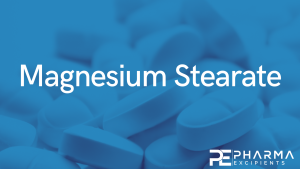Pharmaceutical Development of Film-Coated Mini-Tablets with Losartan Potassium for Epidermolysis Bullosa

Epidermolysis bullosa is a genetically heterogenous skin fragility disorder with multiorgan involvement appearing already in newborn children. Severe progressive fibrosis follows skin blistering, mucosa lesions, and wound healing, favouring development of highly aggressive squamous cell carcinomas. Losartan potassium (LP) has been described to show positive effects; therefore, it was of clinical interest to develop 2 mm mini-tablets with LP for treatment of the affected children.
Several challenges emerged during development: limited flowability and sticking to punches were observed in the first tableting experiments due to a high drug load, and a bitter taste of the LP was reported. Sticking to punches was reduced by using SMCC 50 and a combination of different lubricants; however, direct compression trials on a Korsch XM 12 rotary press were not successful due to compaction phenomena in the hopper. Thus, an intermediate dry granulation was successfully introduced.
Two final formulations of the mini-tablets complied with the requirements of the European Pharmacopoeia regarding disintegration times (<15 min) and friability (<1.0%); mean tensile strengths amounted to about 1 MPa as a compromise between manufacturability and sufficient mechanical strength for further coating studies. The subsequent coating step succeeded delaying the initial drug release for more than 2 min. An acceptance value ≤15 was matched for the coated mini-tablets, and stability studies showed a promising shelf life.
Download the full article as a PDF here or read it here
Materials: Losartan potassium (Form I, Dr. Reddy’s Laboratories, Jinnaram Mandal, Telangana, India), silicified microcrystalline cellulose (PROSOLV® SMCC 50, JRS Pharma, Rosenberg, Germany), copovidone (Kollidon® VA 64 (Fine), BASF Pharma, Ludwigshafen, Germany), crospovidone (Kollidon® CL, BASF, Ludwigshafen, Germany), dicalciumphosphate anhydrous (DI-CAFOS® A 150, Chemische Fabrik Budenheim, Budenheim, Germany), lactose (Tablettose® 80, Flowlac® 100, MEGGLE, Wasserburg am Inn, Germany), isomalt (galenIQTM 721, BENEO-Palatinit, Mannheim, Germany), microcrystalline cellulose (VIVAPUR® 102, JRS Pharma, Rosenberg, Germany), Ludipress® (BASF Pharma, Ludwigshafen, Germany), magnesium stearate (Parteck® LUB MST, Merck, Darmstadt, Germany), sodium stearyl fumarate (PRUV®, JRS Pharma, Rosenberg, Germany), talc (Talkum® Pharma G, C.H. Erbslöh, Krefeld, Germany), HPMC (PHARMACOAT® 603, Shin-Etsu Chemical, Tokyo, Japan), macrogol (PEG 6000, BASF Pharma, Ludwigshafen, Germany), methanol (HPLC grade, VWR Chemicals, Radnor, PA, USA), acetonitrile (HPLC grade, Honeywell, Charlotte, NC, USA), phosphoric acid (Merck, Darmstadt, Germany), monobasic potassium phosphate (Fisher Scientific, Waltham, MA, USA), disodium hydrogen phosphate anhydrous (AppliChem, Darmstadt, Germany), and sodium hydroxide solution 1 N (Merck, Darmstadt, Germany) were used.
Article information: Elezaj, V.; Lura, A.; Canha, L.; Breitkreutz, J. Pharmaceutical Development of Film-Coated Mini-Tablets with Losartan Potassium for Epidermolysis Bullosa. Pharmaceutics 2022, 14, 570. https://doi.org/10.3390/pharmaceutics14030570
Read more on Magnesium Stearate as a pharmaceutical excipient here:


